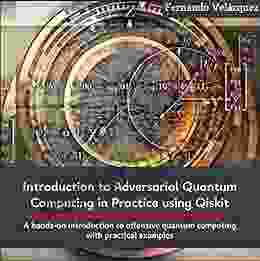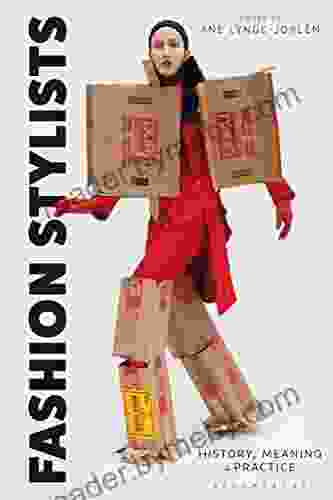Introduction To Adversarial Quantum Computing In Practice Using Qiskit

One of the key challenges in quantum computing is the presence of noise and errors. These errors can arise from various sources, such as imperfections in the quantum hardware or environmental factors. To address these errors, researchers have developed a technique called adversarial quantum computing.
Adversarial quantum computing involves creating and manipulating quantum states that are resistant to noise and errors. This is achieved by using adversarial techniques, which involve training a quantum system to withstand the effects of noise. By ng this, adversarial quantum computing can help to improve the accuracy and reliability of quantum computations.
In this article, we will provide an to adversarial quantum computing in practice using Qiskit. We will cover the basic concepts of adversarial quantum computing, as well as the practical implementation of these concepts using the Qiskit framework.
5 out of 5
| Language | : | English |
| File size | : | 5511 KB |
| Text-to-Speech | : | Enabled |
| Screen Reader | : | Supported |
| Enhanced typesetting | : | Enabled |
| Print length | : | 143 pages |
| Lending | : | Enabled |
Concepts of Adversarial Quantum Computing
The fundamental idea behind adversarial quantum computing is to create and manipulate quantum states that are resistant to noise and errors. This is achieved by using adversarial techniques, which involve training a quantum system to withstand the effects of noise.
In adversarial quantum computing, a quantum system is trained to resist the effects of noise by being exposed to a variety of noise models. These noise models simulate the different types of noise that can occur in a quantum system, such as decoherence, gate errors, and measurement errors.
By exposing the quantum system to these noise models, it can learn to adapt and adjust its behavior to minimize the impact of noise. This process of training the quantum system is known as adversarial training.
Once the quantum system has been trained, it can be used to perform quantum computations that are resistant to noise and errors. This can lead to significant improvements in the accuracy and reliability of quantum computations.
Practical Implementation Using Qiskit
Qiskit is an open-source framework for quantum computing that provides a variety of tools and resources for developing and running quantum programs. Qiskit can be used to implement adversarial quantum computing techniques, making it a valuable tool for researchers and practitioners in this field.
To implement adversarial quantum computing using Qiskit, the following steps can be followed:
- Create a quantum circuit: The first step is to create a quantum circuit that represents the quantum computation that you want to perform. This can be done using the
QuantumCircuitclass in Qiskit. - Add noise to the circuit: Once you have created a quantum circuit, you can add noise to it using the
noisemodule in Qiskit. This module provides a variety of different noise models that can be used to simulate the effects of noise in a quantum system. - Train the quantum circuit: Once you have added noise to the quantum circuit, you can train it to resist the effects of noise using the
adversarial_trainingmodule in Qiskit. This module provides a variety of different adversarial training algorithms that can be used to train quantum circuits. - Run the quantum circuit: Once the quantum circuit has been trained, you can run it on a quantum computer using the
execute()method in Qiskit. This will execute the quantum circuit and return the results of the computation.
Applications of Adversarial Quantum Computing
Adversarial quantum computing has a wide range of potential applications, including:
- Error correction: Adversarial quantum computing can be used to develop new error correction methods for quantum computers. These methods can help to improve the accuracy and reliability of quantum computations.
- Quantum simulation: Adversarial quantum computing can be used to simulate quantum systems that are too complex to be simulated on classical computers. This can be used to study a variety of different quantum phenomena, such as the behavior of quantum materials and the evolution of the universe.
- Quantum machine learning: Adversarial quantum computing can be used to develop new quantum machine learning algorithms. These algorithms can be used to solve complex machine learning problems that are beyond the reach of classical machine learning algorithms.
Adversarial quantum computing is a promising new field that has the potential to revolutionize the way we compute. By using adversarial techniques to train quantum systems to resist the effects of noise and errors, adversarial quantum computing can help to improve the accuracy and reliability of quantum computations. This could lead to a wide range of new applications for quantum computing, including error correction, quantum simulation, and quantum machine learning.
As the field of adversarial quantum computing continues to develop, it is likely that we will see even more innovative and groundbreaking applications for this technology.</start_of_image>
5 out of 5
| Language | : | English |
| File size | : | 5511 KB |
| Text-to-Speech | : | Enabled |
| Screen Reader | : | Supported |
| Enhanced typesetting | : | Enabled |
| Print length | : | 143 pages |
| Lending | : | Enabled |
Do you want to contribute by writing guest posts on this blog?
Please contact us and send us a resume of previous articles that you have written.
 Book
Book Novel
Novel Page
Page Chapter
Chapter Text
Text Story
Story Genre
Genre Reader
Reader Library
Library Paperback
Paperback E-book
E-book Magazine
Magazine Newspaper
Newspaper Paragraph
Paragraph Sentence
Sentence Bookmark
Bookmark Shelf
Shelf Glossary
Glossary Bibliography
Bibliography Foreword
Foreword Preface
Preface Synopsis
Synopsis Annotation
Annotation Footnote
Footnote Manuscript
Manuscript Scroll
Scroll Codex
Codex Tome
Tome Bestseller
Bestseller Classics
Classics Library card
Library card Narrative
Narrative Biography
Biography Autobiography
Autobiography Memoir
Memoir Reference
Reference Encyclopedia
Encyclopedia Mindy Hardwick
Mindy Hardwick Mandy Retzlaff
Mandy Retzlaff Mary Strong
Mary Strong Mark Huber
Mark Huber Robin Green
Robin Green Oliver Warner
Oliver Warner Mike Sielski
Mike Sielski Marcia Angell
Marcia Angell Shantanu Naidu
Shantanu Naidu Lucy Gray
Lucy Gray Tony Lyons
Tony Lyons Noret Flood
Noret Flood Nato Thompson
Nato Thompson Lita Epstein
Lita Epstein Sandra Day O Connor
Sandra Day O Connor Navid Kermani
Navid Kermani Ross Mccammon
Ross Mccammon Shawn Kelly
Shawn Kelly Paul Howard
Paul Howard Laura Rascaroli
Laura Rascaroli
Light bulbAdvertise smarter! Our strategic ad space ensures maximum exposure. Reserve your spot today!

 Carter HayesStars, Stats, Records, and Memories for True Diehards: So You Think You're a...
Carter HayesStars, Stats, Records, and Memories for True Diehards: So You Think You're a... Branden SimmonsFollow ·8.9k
Branden SimmonsFollow ·8.9k Mike HayesFollow ·12.2k
Mike HayesFollow ·12.2k Percy Bysshe ShelleyFollow ·15.3k
Percy Bysshe ShelleyFollow ·15.3k Evan SimmonsFollow ·16.5k
Evan SimmonsFollow ·16.5k Angelo WardFollow ·9.5k
Angelo WardFollow ·9.5k Holden BellFollow ·2.7k
Holden BellFollow ·2.7k Nathaniel HawthorneFollow ·4.3k
Nathaniel HawthorneFollow ·4.3k Desmond FosterFollow ·2.7k
Desmond FosterFollow ·2.7k
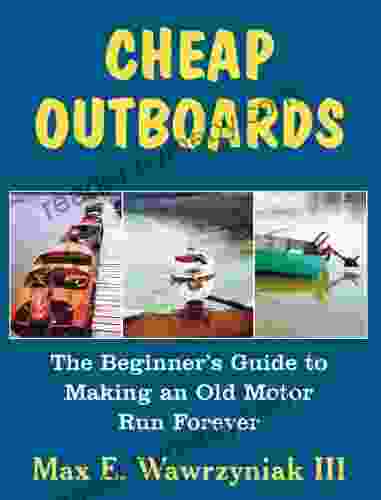
 Wayne Carter
Wayne CarterThe Beginner's Guide to Making an Old Motor Run Forever
If you're like most...
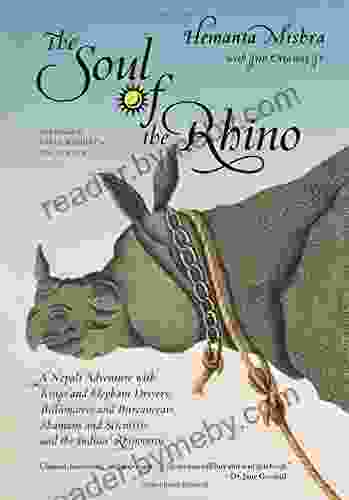
 Deacon Bell
Deacon BellNepali Adventure: Kings and Elephant Drivers,...
In the heart of the...
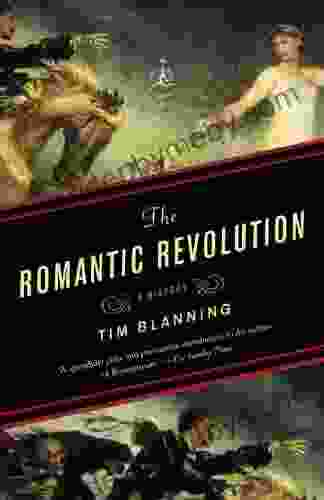
 Carlos Drummond
Carlos DrummondThe Romantic Revolution: A Journey Through History and...
Unveiling the...

 Kazuo Ishiguro
Kazuo IshiguroUnlock Your Inner Innovator: Dive into the New Wave...
Embark on a Transformative Journey of...
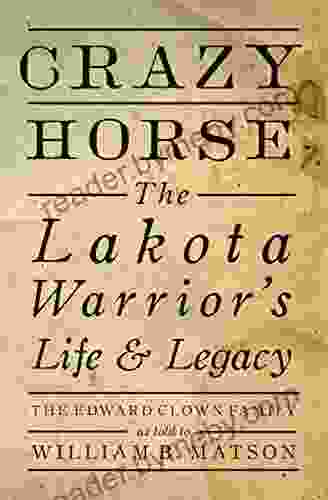
 William Golding
William GoldingCrazy Horse: The Lakota Warrior's Life and Legacy
In the annals of Native...

 Hector Blair
Hector BlairMildred and Richard Loving: The Inspiring Story of...
Mildred and Richard Loving were an...
5 out of 5
| Language | : | English |
| File size | : | 5511 KB |
| Text-to-Speech | : | Enabled |
| Screen Reader | : | Supported |
| Enhanced typesetting | : | Enabled |
| Print length | : | 143 pages |
| Lending | : | Enabled |


